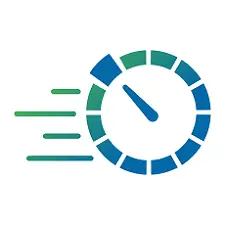SLA is the abbreviation of a service-level agreement.
In definition, it means the level of service that customers will expect from a particular service provider.
The service levels come out in practice metrics as the way to measure the levels of services. The agreement also mentions the remedies or penalties agreed between the two parties when the service is not delivered successfully. SLA used in the tech environment has been a crucial part of the contract between the vendors and service users.
In common practice, SLAs are used between companies and external suppliers. These can also be prevalent in the different departments in the company.
Usually, SLAs are between companies and external suppliers, but they may also be between two departments within a company.
The Importance of SLA
SLAs are an essential part of the developer vendor contract. This agreement collects crucial information about service delivery. It bounds the two parties about the reliability and responsibilities of each team through this document.
This agreement shows the doers the critical information, including the metrics, expectations, and responsibilities. These bound two parties to comply with the contract so that none will be out of their duties. This will ensure that both parties have the same common ground regarding the requirements of the services.
Without the proper SLA, a development project can lead to misinterpretation.
The SLA provides good balances which can protect each party involved in the agreement.
It is also to prevent misalignment by one of the involved parties. The misalignment can severely affect the results of deal pricing, quality of service, and customer experience. SLA has been chiefly tied to IT and software companies.
The provision of the SLA
So, who are the responsible parties for providing the SLAs?
The one that proposes the service level agreement is the service provider itself. The standard SLAs usually represent the levels of service at different tagged prices.
Then the clients and legal representatives could then take a look at the SLAs, modify them, and negotiate them before signing them.
If the clients think that the current SLA favors them, they can give ideas about the service levels in the requests or inquiries. This will encourage the service providers to tweak their SLA. The proposals might change from time to time depending on the negotiation between the parties involved in them.
SLA content
If you’ve understood the basics of SLA in a tech environment, it is time to comprehend more about what it says. What’s inside the SLA anyway?
The SLA document includes the necessary information for clients and relevant parties to comprehend the service levels for the special prices they are willing to pay.
Therefore, it is not only the service names and types that the providers note in the SLA. It is also about the service levels and the accurate metrics of the services. Depending on the forms of the services, the measurement can be different.
Besides the metrics information, there is also other crucial information to share, such as duties, responsibilities, remedies, penalties, and the set of standards for adding and removing the metrics.
The metrics will ensure that each party will work according to their duties and won’t let down the other party. Either party is not rewarded when they do not perform according to the metrics. If the SLA is breached due to the client’s negligence, the supplier won’t get penalized since the mistake was not theirs.
The essential components of SLA
There are two primary components of SLA: the services and the management.
The service elements revolve around:
1. Services
2. Services availability
3. Time window of service
4. Roles of each party
5. Escalation procedure
6. Cost and service trade-offs
Meanwhile, the management elements can revolve around:
1. Measurement methods
2. Set of standards
3. Reportings and documentation
4. Contents
5. Dispute resolution process
6. Indemnification clause
7. Updating the agreement mechanism
In many business services, there is no stagnant SLA. It can change from time to time depending on the needs and requirements of each party. Therefore, it is essential to make sure that the SLA is updated all the time.
The SLA Transfers
When a particular provider merges with another company or is acquired by another larger company, the SLA will naturally work the way it is.
But it is not always the case if the company that develops the provider has different views on the agreement. The ideal thing to do is to renegotiate the SLA. But there’s also a chance that the new owner of the provider appreciates the existing customers so that they will want to meet the customers’ requirements.
Verifying the service levels
As for the clients, there must be practical ways to verify the service levels to ensure that the service providers live up to their words.
The service providers will provide the statistics to their clients through an online site.
The clients will then independently check the site to read the statistics. From the statistics given to them, they will know whether the SLAs are being met or not.
The clients can also check the service credits or penalties as stated in the SLA.
Since there’s a risk of missing something, it is an excellent idea for clients to hire an outsourcing company to help them identify it. And assess. The professionals can help clients to ensure that the particular practices and processes are compliant with the SLA.
The companion from the outsourcing company must be considered as early as the SLA contract negotiation phase. This will help both parties get clear messages and avoid misunderstandings about the process, management, and reports.
There are also third-party tools that can help clients fetch the SLA performance data without checking it by themselves. These tools can be beneficial for busy and don’t have time to review the SLA manually. If you have more budget to start with, investing in these party tools can make a huge, huge difference.









